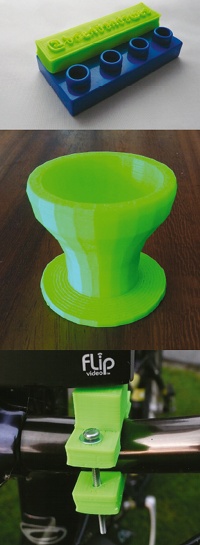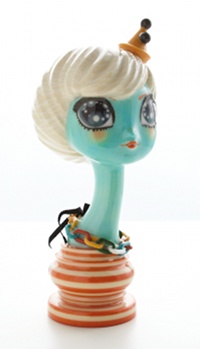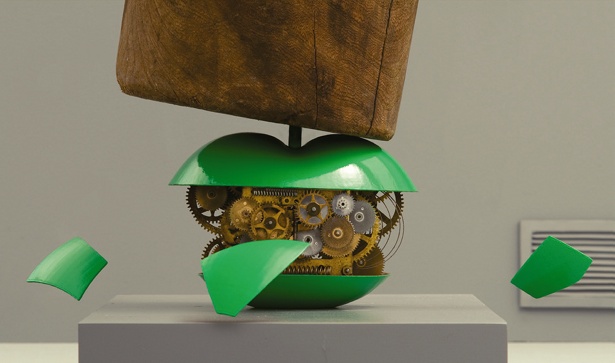3d Printed Project Box Design
Discover 3D printing
Although its roots lie in industrial prototyping from the mid-80s onwards, it's fair to say that 3D printing has become a whole lot cooler of late. Whether you herald it as an impending revolution in consumer convenience, or are just keen to explore the creative opportunities of sculpting any conceivable object at the touch of a button, the technology is evolving fast (if you're inspired, see how you can make 3D prints using your own photos for free.

"The ability to create something digitally, then moments later hold that thing in your hands, is pretty magical," enthuses Brendan Dawes, founder of innovative product design start-up Beep Industries. "Sketches are great, but they're only declarations of intent. 3D printing makes those intentions real, and that's pretty important."
Dawes points out that although the technology has been around for years, being able to have a machine on your desk changes things considerably. "The context is different," he explains. "Need an egg cup? Don't go to the shops, or even order it online to be shipped to you. Download and print it in your own home."
He invested in his own Makerbot Thing-O-Matic 3D printer in December 2010. "When a box of nuts, bolts, electronics and laser-cut parts arrived it was pretty overwhelming," he recalls, "but I love new challenges. You just need patience. And a spanner."
Dawes occupies the fertile shared ground between passionate hobbyist and professional designer, and loves to feed his experiments with new technologies into his commercial work wherever he can, although he's an equally strong advocate of innovation in and of itself.
Johnny Kelly, an animation director at Nexus Productions, shares this enthusiasm: "As someone who's been working on a computer every day for the last 12 or so years, it's really nice to be able to get something back that isn't just a printed piece of paper," declares the award-winning RCA alumnus, who has directed spots for Adobe, the UN, BMW, Bacardi and Google. "The possibility of translating a virtual object into a physical form still makes me feel a bit gooey inside," he continues. "When you 3D print and customise an object, there's something lovely about the resulting fusion of high-end technology and traditional craft."

A self-confessed "100 per cent nerd", Kelly first started experimenting with the process on a piece for Adobe a few years ago, and has used it for several animation projects since. "I had always presumed it would be out of my price range, until our head of studio at Nexus, Ben Cowell, sent a link to the on-demand 3D printing website Shapeways."
On the site, Kelly adds, the cost of each model is based solely on how much material you use. When 3D-printed apples were required to produce his motion ident for Dutch TV show Het Klokhuis, for instance, his initial designs proved extremely expensive: "I didn't realise that the apples could be eggshell-thin, rather than made of solid material," he admits. "We wanted to keep the prices down, so used a 1mm thickness for most of our models – we were worried about how sturdy the resulting apples would be, but luckily there were no breakages."
San Francisco-based Kelly Tunstall is an artist and illustrator who counts Nike, Adidas and Papyrus amongst her clients. She's no stranger to 3D printers: she had one in her office over a decade ago. "There was a technician who came through almost every time you wanted to use it," she smiles. "The prints can still be delicate, depending on the process that you use, but they were really delicate then. I've had arms of statues break off, but we've been having that problem since the Greeks made marble statues. It's nothing new."
A 2D artist by trade, Tunstall found it a challenge making the transition to three dimensions: "You have to think out every angle," she reveals. "I realised that there are a lot of cheats I do to make my paintings work, and you can't get away with that in 3D." Accordingly, she worked closely with Rob Melville at Cao Studio to render her models using 3ds Max. "I roughed the concept in Illustrator, and provided hand-drawn sketches and example paintings, but it was truly a collaborative piece with Rob," she says. "One piece of advice: use bright colours, as they do get more subdued in the process. And use as little material as you can without compromising the structure: it's expensive."

Current page: Page 1
Next Page Page 2
Related articles
3d Printed Project Box Design
Source: https://www.creativebloq.com/3d/discover-3d-printing-3128165
Posted by: southworthartheyely1982.blogspot.com

0 Response to "3d Printed Project Box Design"
Post a Comment